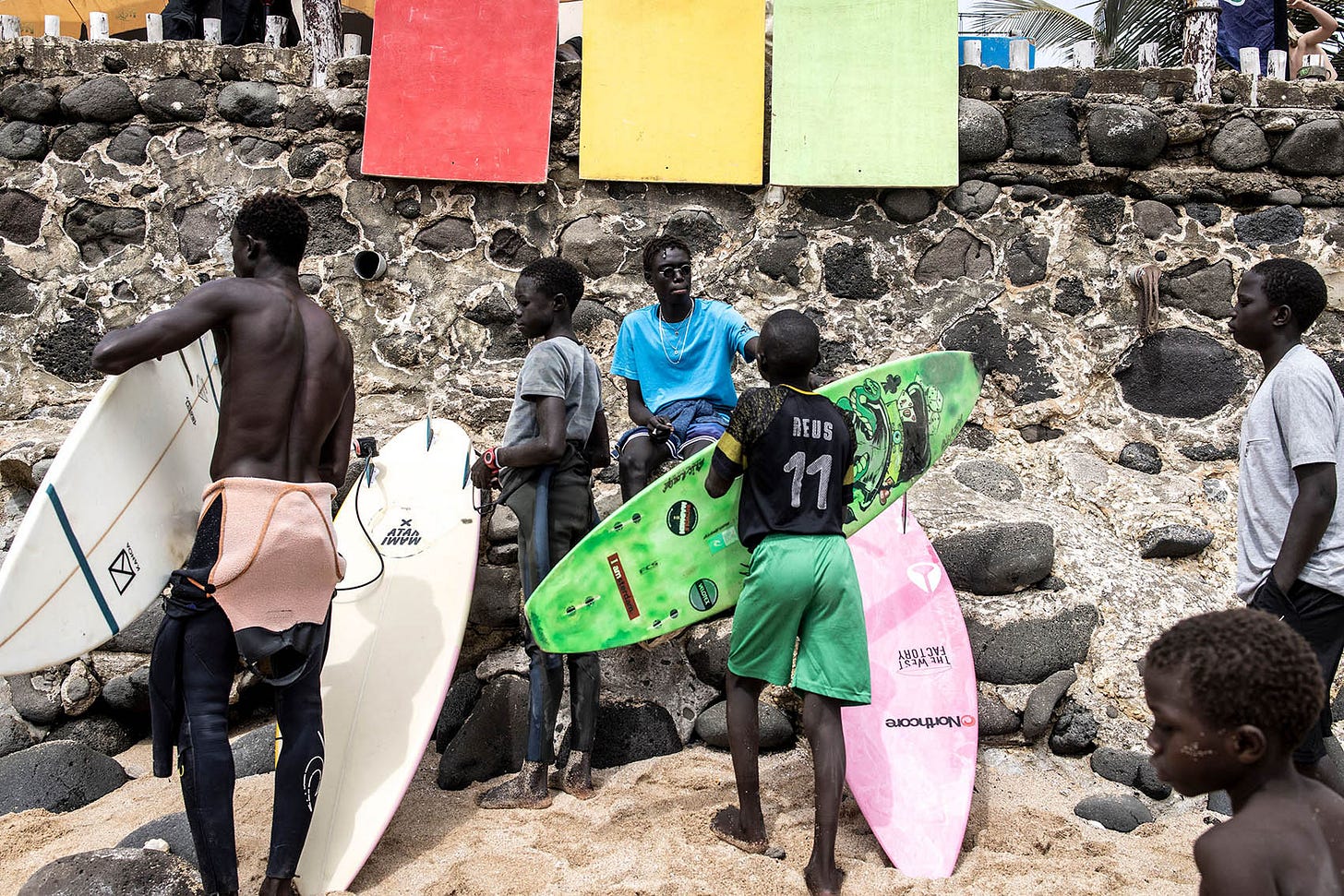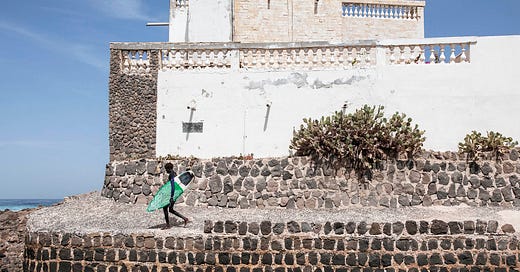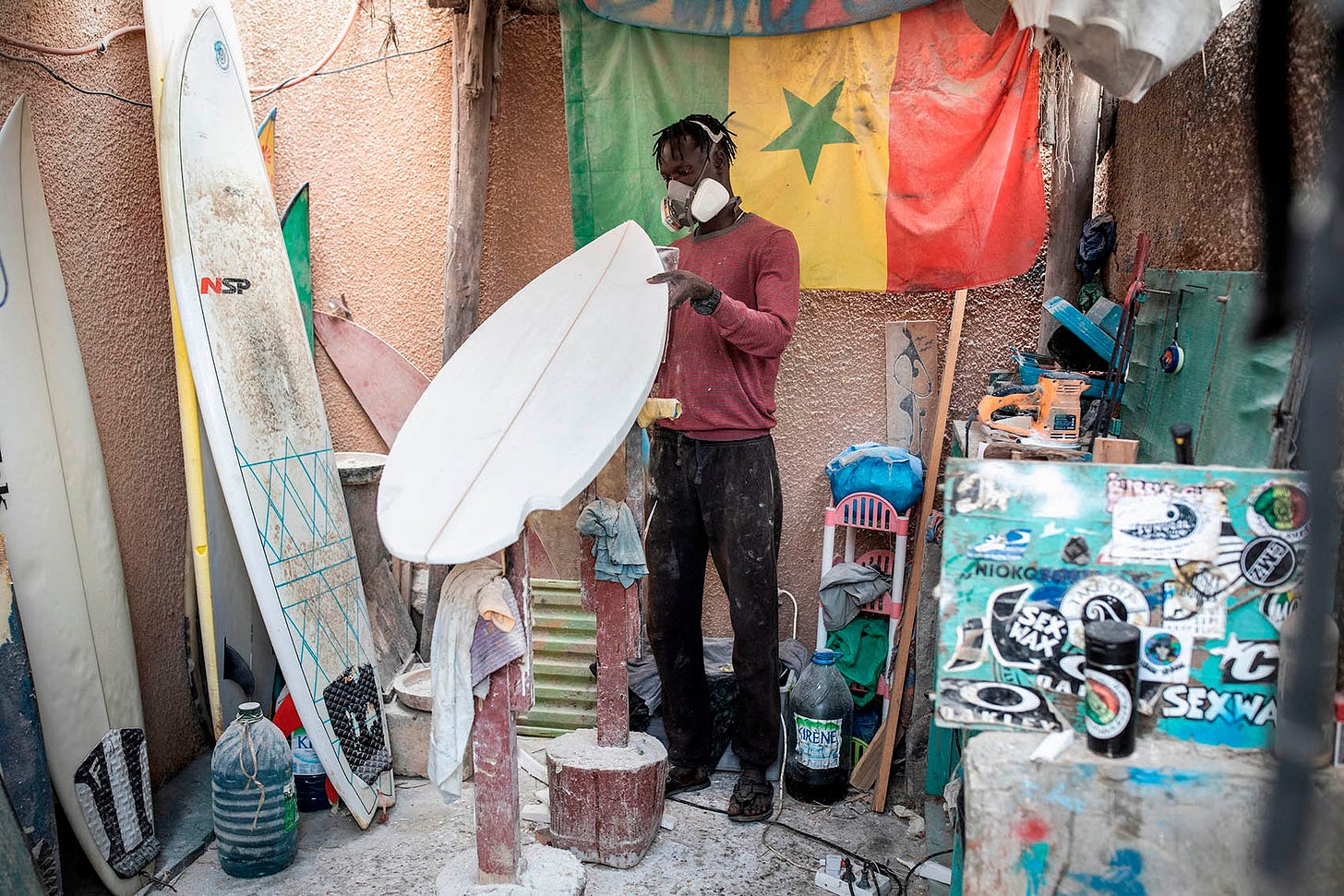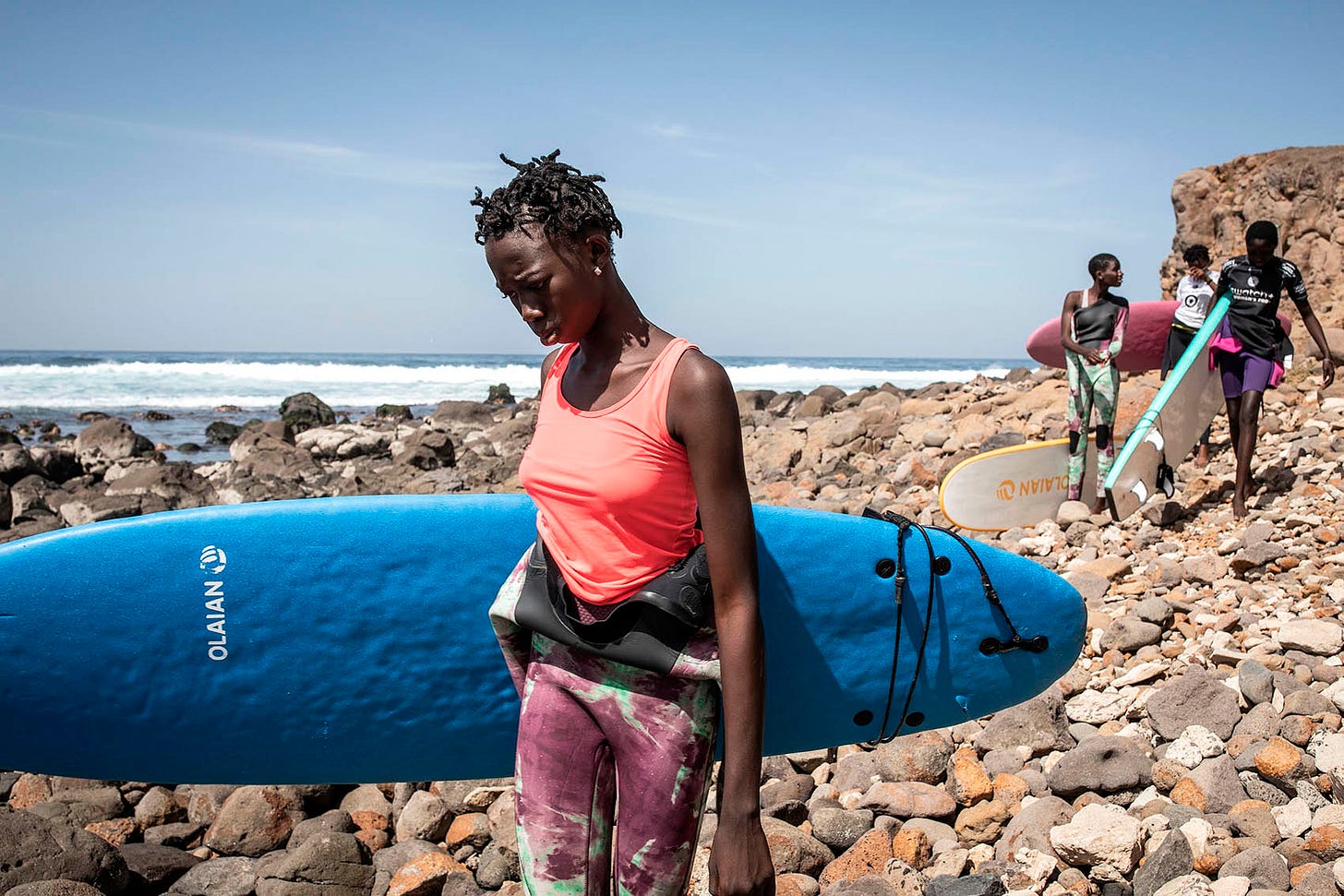Senegal rides the waves
Surfing culture is not new to West Africa’s coastlines. But with its perfect location, Senegal is riding a wave of renewed enthusiasm for the sport.
The first recorded description of surfing, anywhere in the world, comes from a German merchant on the coastline of Ghana, more than 400 years ago. Unsure of exactly what he was seeing, he described how parents would “tie their children to boards and throw them into the water”.
In fact, according to the surferhistorian Kevin Dawson, this merchant was witnessing a 1,000-year old tradition of surfing along West Africa’s coastlines – a tradition that was interlinked with religious and cultural practises, such as the veneration of the water deity Mami Wata, and eventually transplanted to North America by enslaved people.
In Senegal, this tradition is still going strong.
Along the country’s 500km of pristine coastline, surf culture is thriving. Nowhere is this more true than along the shores of Ngor Island – described by the local surf camp as “a paradise on a tiny island surrounded by a few world class waves, close to the city centre of Dakar” – which since the 1980s has played host to a resurgence of interest in the sport.

Leading the modern surfing renaissance were trailblazers Moustapha “Patina” Ndiaye, Renee Laraise and Oumar Seye. Seye became the first professional surfer from Senegal, after being discovered by a talent scout at age 16. With sponsorship from surfing brands Rusty and Rip Curl, Seye entered competitions in Europe in the late 1990s and throughout the 2000s, before retiring.
Now, this generation of surfers is determined to advance the development of the sport in Senegal.
“We wanted to help our younger brothers because we didn’t have that help when we started,” Laraise told The Continent. “We were trying to do things on our own and learning on our own. We want to give them opportunities in surfing so that they can do more than we did.”
In 2008, Senegal achieved a significant milestone by participating in the World Junior Championships, marking the country’s debut in international surfing competitions. Senegal achieved another ground-breaking moment in 2019 when Ngor Island became the venue for the World Surf League qualifying series – making it the first West African country to host a professional surfing event.
Khadjou Sambe – who grew up on Ngor Island – became the first woman professional surfer from Senegal
Laraise estimates that there are more than 300 active surfers in Dakar, and about 100 of them competed in this year’s national championship. Younger surfers will be hoping to qualify for the 2026 Summer Youth Olympic Games, which will be hosted in the Senegalese capital – the first African city to host any version of the Olympic Games.
It hasn’t all been easy riding.
Getting women involved in the sport has been a slow process, in part due to societal pressures on girls that prioritise marriage and motherhood over participation sports. But the Fédération Sénégalaise de Surf has been pushing hard to address this, and its efforts are paying off: in 2020, Khadjou Sambe – who grew up on Ngor Island – became the first woman professional surfer from Senegal. She dedicates some of her time to teaching the other girls how to master the waves. “I want it for black girls, all girls, not just me,” Sambe told Outside magazine in an interview.







